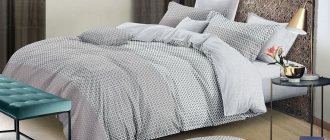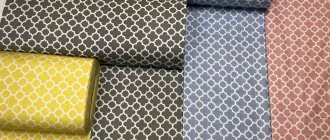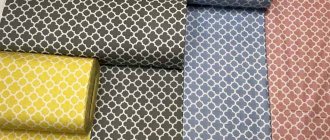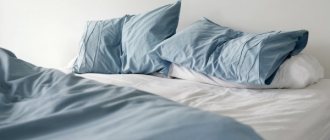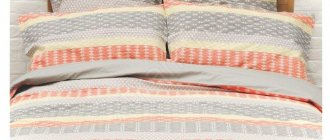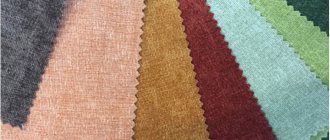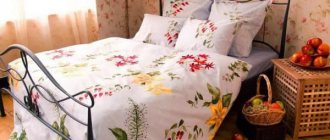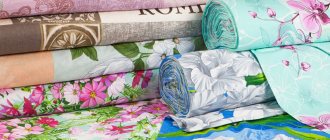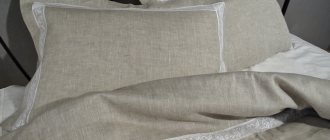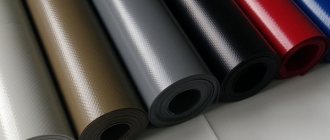Among the numerous home textile products, only those whose materials have been known for decades are popular. Thanks to modern technologies, it becomes possible to develop fabrics with new properties. Such materials include soft cotton or, as it is also called, Softcotton. What kind of fabric is this? Bed linen made from this material is not widely popular. However, this does not mean at all that the properties of this material are not very good.
Features of this type of fabric
To avoid confusion, you need to understand that several major brands use similar names today:
- "Softcotton" is a brand name manufactured by Gokhan Tekstil. This manufacturer develops selected fabrics and various home textile products. Including bed linen;
- The name “Softcotton” is also used by the German brand VITA. This name is given to yarn made for hand knitting, which can be created from pure cotton and is characterized by softness, velvety and beautiful bright shades;
- Softcotton, what kind of fabric is this? In essence, this is a new generation material made from cotton, which is characterized by softness and hygroscopicity. Bed linen does not wrinkle and is highly durable.
Reviews
If plain fabric is most often used for sewing towels, home textiles and other clothing for adults and children, then dyed fabric is more used for making bed linen and bedspreads.
The traditional bedspread (softcotton) is characterized by the following reviews:
- has a dense texture and velvety surface;
- washes easily, practically does not wrinkle, does not require ironing;
- look perfect on a modern, large bed.
You might also be interested in reading about other bedspread materials.
Compound
The composition of this modern fabric may differ. The highest quality and most expensive softcotton is made from natural cotton fibers. The difference between such fibers is their small thickness, and the weave has a high density. To make softcotton fabric a little cheaper, synthetic fibers are added to the weave.
Softcotton bed linen, in which only 20% cotton is widely used today, and the remaining materials are viscose and polyester. This fabric can hardly be called natural, so it can most likely be classified as polycotton. This material obtains attractive visual properties due to the peculiarity of the weave of the fibers. Pills do not form on such fabrics; they may have a velvety surface.
Composition, properties and reviews
Traditional linen is made from 100% natural cotton threads. Meanwhile, in order to reduce the cost of raw materials, artificial and synthetic fibers are often added to cotton. Such a fabric will have the following ratio of raw materials: 20% cotton, 70% polyester and 10% viscose. It should be noted that such soft cotton, having the presented composition, due to the dense weave of the thin threads, has a rather attractive appearance and is in high demand.
Here you can always find useful information, photos and descriptions of all types of fabric.
Material properties:
- hygiene;
- environmental friendliness;
- dirt-repellent and heat-regulating properties;
- antibacterial;
- resistance to deformation;
- ease of care.
It is worth noting the technical characteristics of the fabric:
- hygroscopicity;
- breathability;
- hypoallergenic;
- wear resistance and durability;
- color fastness.
The properties of softcotton material, what kind of fabric it is, and reviews confirm that buyers:
- I like its velvety surface and resistance to pilling;
- attractive appearance;
- strength and durability.
Advantages and disadvantages
The structural features of such materials are distinguished by the fact that their performance characteristics are higher compared to traditional fabrics made from cotton fiber.
The disadvantages include the fact that softcotton bedding can shrink after washing.
Let us list the main advantages of the fabric:
- Natural fibers do not cause allergies. Of course, this is a property of 100% cotton bed linen;
- Good thermoregulation allows you to create coolness in the summer season and warm it up in winter;
- Antibacterial effect. A fabric such as softcotton does not grow mold. Bed linen does not mold and does not create conditions for the development of various microorganisms;
- Resistance to all kinds of pollution;
- Increased hygroscopicity. Even with polyester fibers in the weave, the fabric can absorb a lot of moisture.
- When in contact with the skin it causes a pleasant sensation;
- Does not deform or stretch over time;
- High service life and wear resistance. Softcotton bed linen can be used for a very long time;
- The structure of the fabric allows it to absorb dyes well, so the softcotton will not lose its brightness after several washing sessions;
- The material is easy to care for;
- Affordable price;
- No pellets form on the velvety surface.
Types: cotton, blended, unfinished
In addition to cotton and mixed softcotton, there are varieties, the main difference being the method of weaving the threads:
- Cross. The threads are intertwined crosswise.
- Weft. The warp thread is intertwined with the weft thread. Despite the thinner fiber diameter, the weaving is produced with a high degree of density.
Unfinished for bed linen
Unfinished softcotton is another type of material, characterized by a natural shade and used in eco-collections of pastel linen and clothing. The lack of coloring and finishing details draws attention to the texture and quality of the fabric. Application: bed linen. Softcotton bed linen is presented on the market in 3 main versions: plain, patterned and combined.
Softcotton is used primarily for sewing all types of pastel linen, as well as bath towels, home clothes, pajamas, bedspreads and bathrobes. Children's, some types of men's (shirts and T-shirts) and women's (blouses and dresses) clothing are made from high-quality fabric. Due to its softness, softcotton can be used for sewing bedding for newborns.
Features of bed linen
The most popular application of softcotton is the production of bed linen. Feedback from numerous customers about such products is very positive. It can be said without much doubt that the material in this area is included in the list of leaders in demand. Since the main advantages of this material are softness, strength and resistance to washing, many people prefer it.
For modern girls, it is important that bed linen does not take a lot of time to iron. You don't have to make any special efforts for this.
Judging by the reviews, it is comfortable to sleep with such bedding, you can always relax and calm down. You cannot sweat in such a bed and after some time it will not seem wrinkled. Any color is easily retained on the fabric, and the pattern does not fade after numerous washes.
Application
Softcotton is used for sewing:
- bed linen;
- home textiles;
- men's, women's, children's clothing (suits, dresses, T-shirts, trousers);
- home clothes.
Since the fabric has a dense and at the same time delicate structure, the sewing lines are clear and the seams are neat. The material looks very beautiful in combination with openwork inserts .
Judging by the reviews, clothes and bedding made from this fabric are comfortable and delight their owner with an attractive appearance for a long time. Natural fabrics are always in fashion - especially considering their high practicality.
How to care for softcotton?
The density of the structure prevents contamination. Undesirable odors will not arise due to antifungal properties and resistance to bacterial growth.
Basic care tips:
- This material is perfectly machine washable at 40 degrees;
- The drum rotation speed should not exceed 600 rpm;
- If necessary, softcotton can be washed by hand without much difficulty;
- You can add regular laundry detergents. However, using bleach can make the patterns faded and less expressive;
- Products made from such fabrics can be dried either in the machine or in the fresh air;
- Softcotton hardly wrinkles, but if you need to iron it, it is better to do it with a slightly damp cloth.
Now everyone can understand without much difficulty what softcotton bed linen is.
Properties
Softcotton has the same characteristics as other natural cotton fabrics. This material:
- environmentally friendly;
- hypoallergenic;
- perfectly absorbs moisture;
- durable, not prone to rapid wear;
- does not deform, does not wash or fade;
- has an attractive appearance;
- allows air to pass through.
In addition, the fabric does not allow fungi and other pathogens to multiply, retains heat well in cold weather and cools the body in hot weather, and does not absorb dirt. The material is also not particularly difficult to care for. Its only drawback is its tendency to shrink.
Care Tips
Softcotton is considered one of the most unpretentious fabrics. The dense structure repels dirt, so the products get dirty a little and are easy to wash. The material is not susceptible to unpleasant odors, since cotton and synthetic fibers prevent the growth of bacteria and bed parasites.
In order for the products to serve for a long time and not lose their attractiveness, it is enough to follow simple rules of care:
| Operation | Description |
| Wash | Manual or machine (cotton, synthetic mode). |
| Water temperature | Fabrics with polyester can be washed at 40°C, textiles made from 100% cotton can withstand up to 60°C. |
| Spin | At reduced speed (600 rpm) to avoid bruising and damage to fibers. |
| Drying | Allowed in air or in a dryer. |
| Ironing | If soft cotton has been dried thoroughly, then it does not need to be ironed. Smooth out strong creases and folds after preliminary moistening with a spray bottle. Iron clothes from the inside out, bedding from both sides. |
| Whitening | Use products with active oxygen: the drugs do not destroy fibers, refresh the color, making it richer. |
What else is sewn from softcotton?
Cozy, soft and practical, innovative cotton material is widely used for a variety of home textiles. A variety of bedspreads, blankets, decorative covers and pillowcases are made from it. This hygienic and comfortable fabric is ideal for home wear - pajamas, dressing gowns, trousers, sweatshirts, etc. Bright, soft and velvety softcotton, especially of a mixed composition, is often used when sewing women's blouses and men's shirts, children's suits and dresses, as well as a variety of casual clothing for adults of all ages.
The dense, but at the same time delicate structure of this fabric makes it possible to achieve neat seams and clear lines, which makes products made from it beautiful and neat, allowing the use of original cuts, stitches and other finishing elements. Softcotton combines well with other materials, primarily with guipure and openwork inserts.
It should be remembered that the towels, bathrobes, T-shirts, socks and other knitted and terry products called Soft Cotton that are often available for sale, strictly speaking, are not related to the fabric with such names, and their composition and properties may be completely different (which , of course, does not detract from the possible high qualities of these products).
Types and their properties
First of all, softcotton varies in composition: either completely natural or with the addition of synthetics. The first option is considered more environmentally friendly; it does not cause any allergic reactions. However, it is not as durable, practical and easy to use as its mixed counterpart.
In addition, materials may vary in design. There are also two main types:
- printed softcotton , most often with printed patterns, but today the option with digital printing using 3D technology is widespread and popular, allowing you to obtain beautiful, bright canvases;
- plain softcotton , made in any one color, most often soft, pastel shades, ideal for stylish bedroom sets; Manufacturers offer convenient color cards, thanks to which you can easily select the desired color.
Note that purely plain bedding sets are not very popular today. Much more often, manufacturers offer contrasting two-color underwear, which looks very impressive.
Softcotton - what kind of fabric is it?
To understand what kind of fabric this is - softcotton, you need to read the reviews of the owners of products made from it. But first let's look at the translation. The English expression soft cotton in Russian sounds like “soft cotton” and fully corresponds to the features of this modern material. In essence, this is cotton textiles that are so familiar to everyone, but in a slightly different form.
The fabrics are incredibly soft. They are very soft and airy thanks to a special way of weaving the fibers. The density of such fabrics is higher than ordinary cotton ones, but at the same time they are thinner, lie pleasantly on the body and are practically not felt by the skin. Durable, comfortable, modern - this is how softcotton products can be characterized.
A little historical background
Initially, the name “softcotton” fully corresponded to the textiles produced using the new technology. As mentioned above, if you translate it into Russian, you get “soft (affectionate) cotton,” and indeed, the material was made from almost one hundred percent plant materials, so it was completely natural. Despite the English origin of the name, it is believed that the birthplace of the unique paintings is Turkey. Moreover, in this country there is even a registered trademark, the name of which is Soft Cotton.
However, today, under this name, mainly mixed material is produced. Wanting to reduce economic costs, as well as give the resulting fabrics maximum strength and practicality, manufacturers began to add synthetics to the traditional composition. The most common modern option is mixed textiles, consisting of 70% polyester, plus only 20% cotton, the remaining share is viscose - 10%. This is why softcotton cannot be called natural, but in operation it is no worse than analogues made entirely from natural raw materials.
Description
In the modern textile industry, there are many fabrics produced on the basis of cotton, but using new technologies, as well as with the addition of a variety of synthetic fibers. It is very difficult to say which of these paintings is more practical and which is better to purchase. When choosing fabric, you must proceed from the requirements for the item you will sew from it.
Judging by consumer reviews, softcotton is one of the most delicate and body-friendly high-tech cotton materials. It is very soft, breathable and, despite the large percentage of polyester, does not allow the body to sweat, providing an ideal microclimate. In these characteristics, the described textile surpasses even the popular polycotton - the same blend, but with a different ratio of natural and synthetic raw materials.
